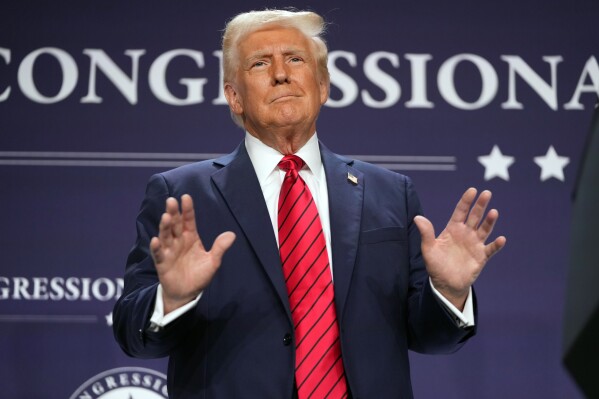President Donald Trump told reporters on Air Force One Sunday that he plans to announce a 25% tariff on steel and aluminum imports into the U.S. on Monday.
“We’ll also be announcing steel tariffs on Monday,” Trump said. “Any steel coming into the United States is going to have a 25% tariff.”
“Aluminum, too,” he added.
He mentioned holding another press conference Tuesday or Wednesday to announce new reciprocal tariffs. These tariffs could match other countries’ tariffs on U.S. goods dollar-for-dollar.
“Very simply, it’s if they charge us, we charge them,” Trump explained.
Details were scarce on how wide-reaching the tariffs would be or when they would take effect. It’s also unclear if the new steel and aluminum tariffs will be on top of those already in place on countries like China.
In 2018, Trump imposed 25% tariffs on steel and 10% on aluminum but later lifted them on Mexico and Canada.
Last week, Trump raised tariffs by 10% on all Chinese imports. China quickly hit back by adding tariffs on chips and metals, launching an investigation into Google, and listing the company behind Calvin Klein and Tommy Hilfiger as an unreliable entity.
Trump paused some tariffs on goods under $800 until a system is developed for tracking them. He also delayed 25% tariffs on Mexican and Canadian imports until at least March 1.
The U.S. isn’t as manufacturing-heavy as it once was, but it still uses millions of tons of steel and aluminum annually. These materials are crucial for industries like automaking, construction, aerospace, and infrastructure. Tariffs could drive up costs by making imported steel more expensive and encouraging domestic producers to raise their prices.
The steel industry welcomed the move.
“AISI welcomes President Trump’s continued commitment to a strong American steel industry,” said Kevin Dempsey, CEO of the American Iron and Steel Institute. “We look forward to working closely with the President to implement a robust trade agenda.”
However, the European Union expressed frustration, calling the tariffs unjustified.
“We will react to protect the interests of European businesses, workers and consumers,” said Olof Gill, trade spokesperson for the European Commission.
Steel imports into the U.S. fell 27% between 2017 and 2019 after tariffs were introduced, though some of that was due to lower demand. Domestic steel production rose initially but dropped again in recent years, falling nearly 10% compared to a decade ago.

